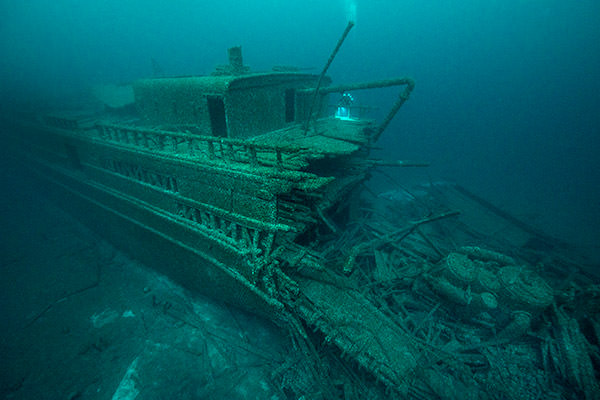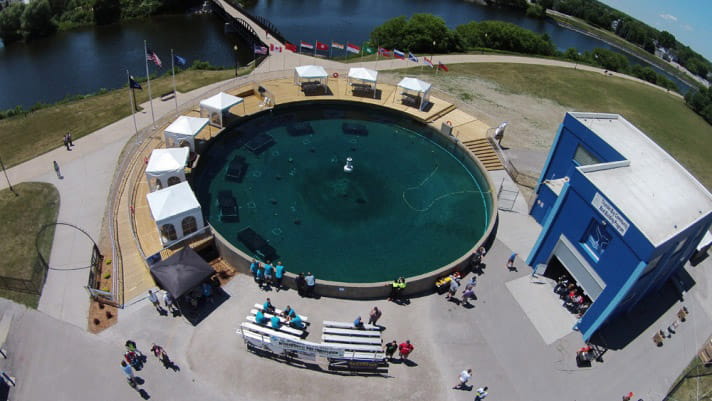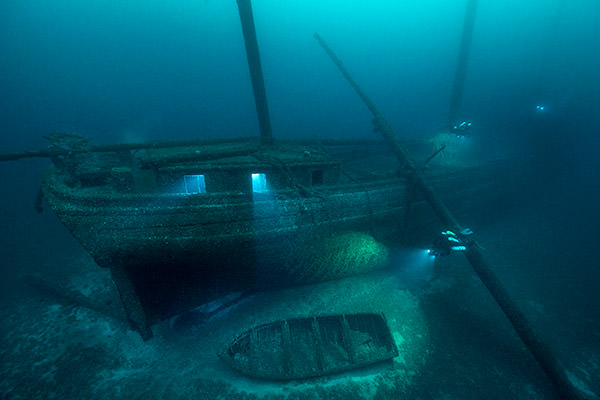Lake Huron’s cold, fresh water ensures that Thunder Bay’s shipwrecks are among the best preserved in the world. The sanctuary conducts research and monitoring activities in an effort to better understand and protect maritime heritage resources. The knowledge gained through research informs management practices and provides public information. The sanctuary also assists in research aimed at better understanding Great Lakes natural resources. From real-time weather observations and artificial reefs to observing the complex micro-environment of submerged sinkholes, the sanctuary supports a variety of science partners.

Condition Reports
Like all of the national marine sanctuary sites, Thunder Bay uses a condition report to assess the condition of sanctuary resources.

Facilitating Science
There are several resources available to researchers at Thunder Bay National Marine Sanctuary. Please contact the research coordinator for discussions about facilitating research within the Thunder Bay National Marine Sanctuary.

Expeditions
The sanctuary conducts a variety of research and resource protection projects aimed at better understanding and protecting the unique maritime heritage sites within it.

Climate Change
Photo: Becky Schott
There are potential links between climate change in the Great Lakes and the deterioration of cultural resources, such as shipwrecks. Learn more about how the National Marine Sanctuary System is addressing climate change threats.

